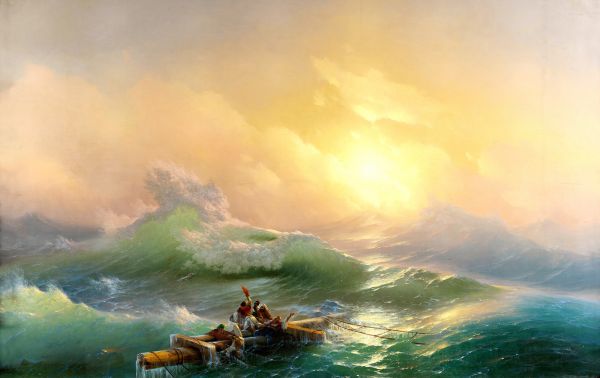|
|
The Ninth Wave. 1850

Aivazovskiy Ivan,
Oil on canvas
221 x 332
State Russian Museum
Пост. в 1897 из ИЭ
Annotation
The Ninth Wave is probably Aivazovsky’s most famous and popular work. Originally acquired for the Imperial Hermitage, it was one of the first paintings in the collection of the Emperor Alexander III Russian Museum in 1897. The ninth wave — in popular legend, the most terrible, powerful and destructive wave — is fast approaching. Yet the darkness of the night is broken by the light of hope. A small group of people cling to the wreckage of the ship’s mast, which seems a more reliable refuge at dawn than it did in the darkness of the night. The desperate attempts to survive will conquer the stormy sea. The Ninth Wave was, of course, also interpreted allegorically. The painting acquired symbolic meaning for many generations, instilling faith in the victory of man, humanity and life.
Author's Biography
Aivazovskiy Ivan
Aivazovsky (Haivazovsky), Hovhannes (Ivan Konstantinovich)
1817, Theodosia - 1900, Theodosia
Painter, graphic artist. Studied at the Imperial Academy of Arts (1833-1838). Fellow of the Imperial Academy of Arts in the Crimea and Italy (1838-1844). Academician (1844), professor (1847), honorary member of the Imperial Academy of Arts (1887). Member of the Accademia di San Luca in Rome (1840) and the academies of Paris (1843), Amsterdam (1845), Florence (1875) and Stuttgart (1879). Contributed to around 120 exhibitions (from 1835). Contributed to the exhibitions of the Imperial Academy of Arts (1835-1900), Paris Salon (1843, 1879), Society of Exhibitions of Works of An (1876-1883), Moscow Society of Lovers of the Arts (1881), Pan-Russian Exhibitions in Moscow (1882) and Nizhny Novgorod (1896), International Exhibitions in Philadelphia (1876), Munich (1879) and Berlin (1886) and the World Exhibitions in Paris (1858, 1878), London (1863) and Chicago (1893). Awarded the Legion d'honneur (1857). Lived and worked in Theodosia, where he founded the General Art Studios (1865) and the Theodosia Picture Gallery (1880).

